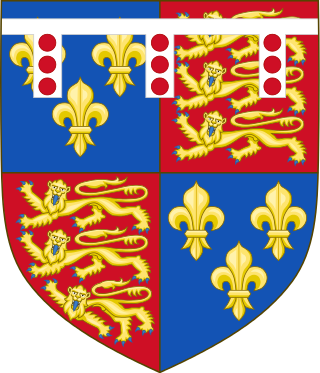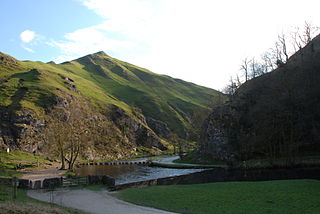Related Research Articles

Year 1487 (MCDLXXXVII) was a common year starting on Monday of the Julian calendar.

Year 1477 (MCDLXXVII) was a common year starting on Wednesday of the Julian calendar.

The Battle of Stoke Field on 16 June 1487 may be considered the last battle of the Wars of the Roses, since it was the last major engagement between contenders for the throne whose claims derived from descent from the houses of Lancaster and York respectively. The Battle of Bosworth Field, two years previously, had established King Henry VII on the throne, ending the last period of Yorkist rule and initiating that of the Tudors. The Battle of Stoke Field was the decisive engagement in an attempt by leading Yorkists to unseat him in favour of the pretender Lambert Simnel.

Lambert Simnel was a pretender to the throne of England. In 1487, his claim to be Edward Plantagenet, 17th Earl of Warwick, threatened the newly established reign of Henry VII (1485–1509). Simnel became the figurehead of a Yorkist rebellion organised by John de la Pole, Earl of Lincoln. The rebellion was crushed in 1487. Simnel was pardoned because of his tender years, and was thereafter employed by the royal household as a scullion, and, later, as a Groom of the Stool.

The House of York was a cadet branch of the English royal House of Plantagenet. Three of its members became kings of England in the late 15th century. The House of York descended in the male line from Edmund of Langley, 1st Duke of York, the fourth surviving son of Edward III. In time, it also represented Edward III's senior line, when an heir of York married the heiress-descendant of Lionel, Duke of Clarence, Edward III's second surviving son. It is based on these descents that they claimed the English crown. Compared with its rival, the House of Lancaster, it had a superior claim to the throne of England according to cognatic primogeniture, but an inferior claim according to agnatic primogeniture. The reign of this dynasty ended with the death of Richard III of England at the Battle of Bosworth Field in 1485. It became extinct in the male line with the death of Edward Plantagenet, 17th Earl of Warwick, in 1499.
Edmund de la Pole, 3rd Duke of Suffolk, 6th Earl of Suffolk, KG, Duke of Suffolk, was a son of John de la Pole, 2nd Duke of Suffolk and his wife Elizabeth of York.

John de la Pole, Earl of Lincoln was a leading figure in the Yorkist aristocracy during the Wars of the Roses.

Richard de la Pole was a pretender to the English crown. Commonly nicknamed "White Rose", he was the last Yorkist claimant to actively and openly seek the crown of England. He lived in exile after many of his relatives were executed, becoming allied with Louis XII of France in the War of the League of Cambrai. Louis saw him as a more favourable ally and prospect for an English king than Henry VIII.
Walter Fitzsimon or Fitzsimons was a statesman and cleric in Ireland in the reign of Henry VII, who held the offices of Archbishop of Dublin and Lord Chancellor of Ireland.
Sir Thomas FitzGerald of Laccagh (c.1458–1487) was an Irish lawyer, statesman and soldier who was Lord Chancellor of Ireland under Richard III and Henry VII, but rebelled against Henry and was killed at the Battle of Stoke.
Philip Bermingham (c.1420–1490) was an Irish judge who held the office of Lord Chief Justice of Ireland. He was regarded as "the most learned Irish lawyer of his time", but he had a somewhat turbulent political career and was twice accused of treason.
Katherine Stourton, Baroness Grey of Codnor was an English noblewoman. Her life reflects the turbulence of English political life in the late fifteenth and early sixteenth centuries; her first husband was attainted for treason, and her third husband holds the record for the longest period of imprisonment in the Tower of London.
John Payne, Bishop of Meath, held that office from 1483 until his death in 1506; he was also Master of the Rolls in Ireland. He is best remembered for his part in the coronation of Lambert Simnel, the pretender to the Crown of England, in 1487.

Thomas Dowdall, also spelt Dowdale, Douedall, or Dowedall, was an Irish barrister and judge who held the office of Master of the Rolls in Ireland.
Barnaby Barnewall was an Irish barrister and judge, and a founder member of the military guild, the Brotherhood of Saint George.
Thomas Cusacke, Cusack or de Cusack was an Irish barrister and judge, who held the offices of Attorney General for Ireland and Lord Chief Justice of Ireland. He should not be confused with his much younger cousin Sir Thomas Cusack, Lord Chancellor of Ireland, who was a child of about six when the elder Thomas died.
John Nangle, 16th Baron of Navan was an Irish nobleman and military commander of the early Tudor era. He was renowned in his own lifetime as a courageous soldier, who fought with distinction at the Battle of Knockdoe in 1504.
Patrick Burnell was an Irish judge and Crown official of the fifteenth century.
Lambert Simnel (1938–1952) was a British Thoroughbred racehorse and sire, who raced during World War II and was best known for winning the classic 2000 Guineas in 1941. As a two-year-old he won once and finished second in the Dewhurst Stakes In the following spring he won the 2000 Guineas, beating a field which included the subsequent classic winners Owen Tudor and Sun Castle. He was beaten when favourite for the Derby and finished unplaced in the St Leger. He won once as a four-year-old in 1942 before being retired to stud. He stood as a breeding stallion in England and Argentina with limited success before his death in 1952.
Octavian De Spinellis or Ottaviano de Palatio was Archbishop of Armagh from 1478 until 1513.
References
- Bennett, Michael (1987). Lambert Simnel and the Battle of Stoke . St. Martin's Press. ISBN 0-312-01213-6.
- Wouter Loeff, 'Martin Zwart', Brabantserfgoed.nl, 2019.